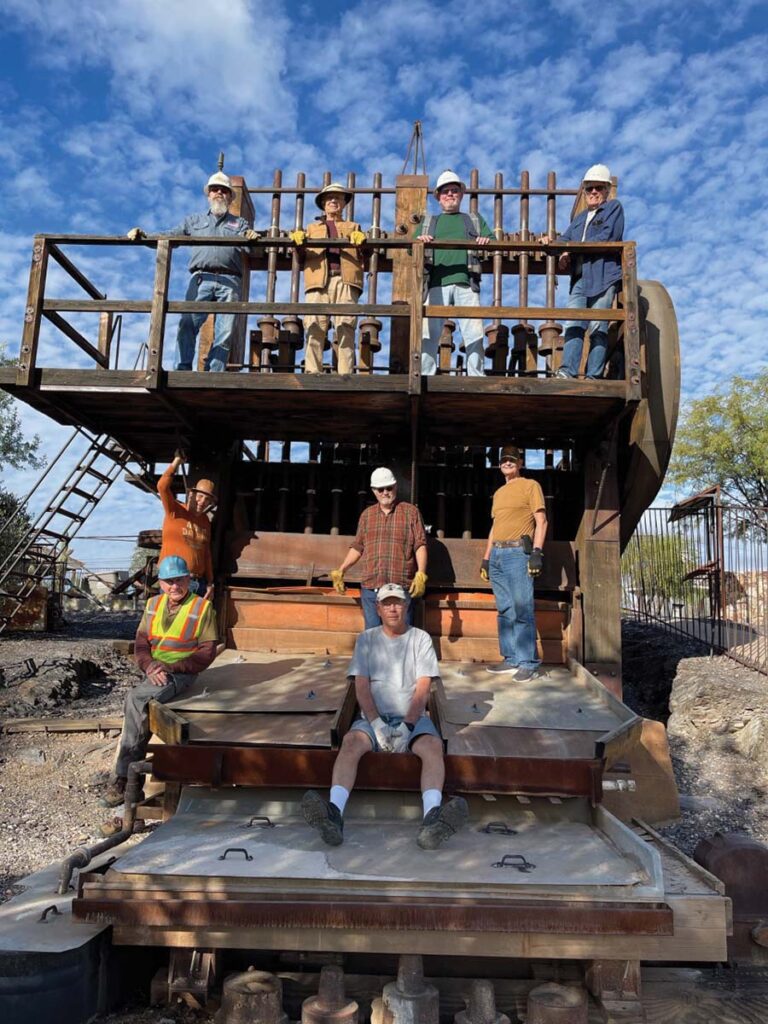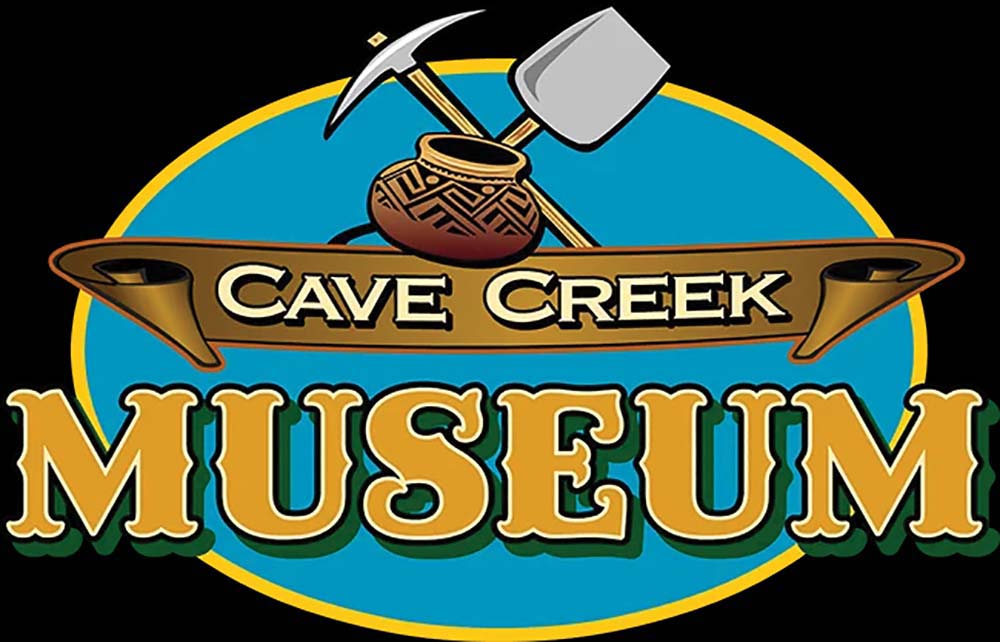Cave Creek – A one-of-a-kind dream team came together, and its numbers continue to grow, to rescue an ore-crushing stamp mill (a type of mill machine that crushes material by pounding rather than grinding, to further process or extract metallic ores) and bring it to life at the Cave Creek Museum. Today, the museum is home to the only fully operational, ten-stamp ore crushing mill in Arizona – and the public loves to see the giant equipment roar to life the second Saturday of every month during season.

Middle row: standing (left to right): Greg Barnhart, Joe Zylwitis, Tom Kelley
Top: standing – (left to right): Pete Peterson, Bob Flach, Dan Cornette, Erik Anderson
More than 13 years ago, Evelyn Johnson, Cave Creek Museum executive director, met Charlie Connell in Phoenix. Connell, an an expert on stamp mills, was very involved in working with museums and stamp mills and had a keen understanding of their inner workings at every level. The pair got together with Al Zeman, mining aficionado and museum volunteer, and focused their sights on retrieving the Golden Reef Stamp Mill and tramway from Continental Mountain where it resided. The goal was to bring it to the museum and restore it to its original function. The mill and tram are more than 100 years old; the mill was built in 1910 and the tramway in 1913. The tramway at the museum is a replica; originals remain in the mountain.
The duo decided to contact APS to ask the public service company to go to the mountain and bring the mill, in pieces, to Cave Creek Museum. The equipment was delivered in the spring 2008. It now is located five miles from its original home, still in the Cave Creek Mining District.
Connell began by building wood framing to support the heavy equipment. Each step of the way, more and more people volunteered to help Connell who worked with the nine-plus member team to get the stamp mill working again. It took four years. Johnson and Connell continued to plan opportunity for the “new” stamp mill in an effort to create an experience that members and guests could enjoy and appreciate.
As a result, the next step was to assemble the ore-carrying tramway and connect it to the stamp mill. The tramway’s metal parts were all savaged and put to use, however the rest of the tram required construction by the team. Next, Connell worked on the jaw crusher, constructed a gold panning station, built a blacksmith shop and created a unique mine shaft featuring the sights and sound from the day of early gold miners. Today, the dream team’s hard work is known as the Arizona Gold Mining Experience (AzGME).
“This amazing team of mining engineers and experienced handymen, worked diligently to share this wealth of mining history with visitors to the museum,” says Johnson. “Their expertise and continued efforts have made our AGME a must-see for residents and visitors alike. This special team of people also maintains other parts of the museum to keep us in top-top shape at all times.”
DID YOU KNOW?
Stamp mills were a 19th-century invention that saved miners from having to extract precious minerals by hand. The stamping process – re-created within the Cave Creek Museum’s Arizona Gold Mining Experience – was used at the turn of the 20th century across much of Arizona, which has a storied history of mining. Because stamp mills require water and mines typically were on mountaintops without water access, miners built tramways to transfer ore in buckets from mines to the stamp mill at a lower elevation. The Golden Reef mill features 10 steel rods, each weighing 1,000 pounds, which pulverize gold-bearing rocks (from quartz) into sand, releasing the precious metal from the ore, which is then further refined with mercury to extract every flake.
Cave Creek Museum hosts monthly demonstrations of the Golden Reef Stamp Mill & Tramway to show how difficult it was for miners in the Cave Creek Mining District where the first claims were made in the 1870s. The demonstrations, which are showcased the second Saturday of each month during season, require registration prior. The next demonstrations will be held on January 14 and 21, 2023. Reservations can be made at cavecreekmuseum.org or by calling 480.488.2764.
The Cave Creek Museum is located at 6140 E. Skyline Drive in Cave Creek, Ariz., 480.488.2764; cavecreekmuseum.org. Open October through May. The 52-year-old museum’s mission is to preserve the artifacts of the prehistory, history, culture and legacy of the Cave Creek Mining District and the Cave Creek/Carefree foothills area through education, research, and interpretive exhibits.





